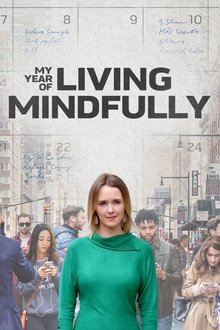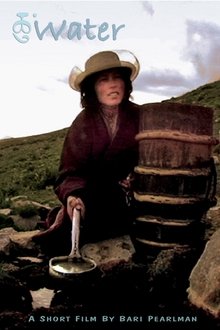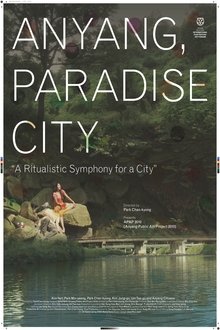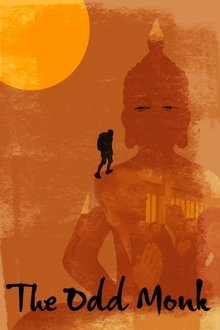A beautiful documentary film set around Dzogchen monastery in Tibet. It focuses on Kjabje Dzogchen Pema Kalsang Rinpoche, who has been instrumental in the rebuilding and re-establishing of the great monastic seat of Dzogchen monastery in Tibet. In 1998 Rinpoche began the construction of the Lotus Ground Retreat Centre in the secluded meadow of Dzogchen Pema Tung. Having completed the stunning Temple of Great Perfection in 2003, he established the Pema Tung annual teachings and empowerments of the secret heart essence of Dzogpa Chenpo for great numbers of fortunate students. High on the Tibetan plateau, in the hidden valley of Rudam, Kham (Eastern Tibet), is the Buddhist monastery of Tibet. It is home o one of the world's most profound and secret spiritual traditions.
Related Movies

The Ring of the Buddha (2003)
Nepal 1950. A mysterious, unexplored country. The Swiss geologist Toni Hagen, was the first European to pass through the "forbidden" kingdom. He doesn't discover any mineral resources there. Yet he does uncover the mysteries of life and penetrates towards a more profound truth which lends a new dimension to his life. In the spring of 1999, Hagen returns to Nepal to keep a promise of almost 50 years: At that time a Buddhist monk had presented him with the gift of a valuable and mystical ring.

My Year of Living Mindfully (2020)
Shannon Harvey was working in her dream job as a radio news journalist when, at the age of 24 she was diagnosed with a devastating auto-immune disease. Determined to find a solution, she began researching cutting-edge mind-body medicine. Is it really possible, she wonders, that a simple practice that can be done anywhere, any time, by anyone, can ease suffering and promote physical and mental healing? Synthesizing the work of leading scientists with the ways of mystics, she undertakes a year-long experiment, with herself as the subject. Will meditation revolutionize her health and well-being, or is it just another over-hyped self-help fad? This compelling account of her journey provides fascinating insights about how to be well and happy in the modern world.

Wake Up (2010)
Jonas Elrod woke up one day with the ability to see and hear angels, demons and ghosts. Filmed over the course of three years, this documentary follows Jonas and his girlfriend as they try to understand the phenomenon.

Blindsight (2006)
Six blind Tibetan teenagers climb the Lhakpa-Ri peak of Mount Everest, led by seven-summit blind mountain-climber Erik Weihenmayer.

Buddhism (1962)
In this short documentary we learn the back story of the Buddha – the religion he founded and how it is manifested today. Travel through Southeast Asia to India, Burma, Sri Lanka (formerly Ceylon), Thailand, Japan, China and many other countries to discover the history and ideas behind Buddhism.

Water (2011)
A Tibetan woman collects water near her family's yak farm and brings it back home 80-pounds full, in a ritual that takes her an hour to complete. A selection from Peabody Award-winning documentarian Bari Pearlman’s Nangchen Shorts series.

When the Iron Bird Flies (2012)
WHEN THE IRON BIRD FLIES takes us on an up-close and personal journey, exploring the complex interactions between contemporary Tibetan Buddhism and western culture. The film goes in-depth to portray the experiences and insights of both teachers and practitioners in the US and around the world. Along the way, it illuminates the wide ranging dialogs taking place between Buddhist teachings and science, psychology, gender theory and the arts. The film creates a vivid and entertaining portrait of the world of Tibetan Buddhism, as it is manifesting in the West and asks the vital question - 'In these increasingly chaotic modern times, can these age old teachings help us to find genuine happiness and create a saner, more compassionate 21st century world?'

August (2024)
The documentary marks the directorial debut of Chinese actor Zhang Zhehan, it documents his deeply personal journey of self-healing in the aftermath of a devastating cyber media storm in August 2021 that abruptly halted his acting career.

The monk (2023)
When Danish filmmakers Mira Jargil and Christian Sønderby Jepsen try to find balance in their stressful lives, they seek guidance from a renowned Danish HIV researcher turned monk deep in the mountains of Sri Lanka. But their filming process goes differently than expected. When they hear that the renowned Danish doctor and HIV scientist Jan Erik Hansen has burned all boats to live as a Buddhist monk on a mountain in Sri Lanka, the two Danish documentary makers Mira Jargil and Christian Sønderby Jepsen decide to make a film about him. to make. Jan Erik Hansen, as monk Bhante, has become an important voice in the Buddhist community. He has a YouTube channel with many followers, and people from all over the world ask him their life questions. The film project ends unexpectedly when the monk and the filmmakers appear to have different ideas about the film.

Journey Into Buddhism: Prajna Earth (2007)
Prajna is the Sanskrit word for radiant wisdom, and yatra is the word for pilgrimage or spiritual journey. This visually stunning documentary is a cinematic pilgrimage exploring the lost civilization of Angkor in Cambodia, including the largest temple in the world, the magnificent Angkor Wat. The journey continues to sacred sites of the natural world, Hindu Bali, jungles of Java, and discovering Buddhist Borobudur. A John Bush film.

How to Cook Your Life (2007)
A Zen priest in San Francisco and cookbook author use Zen Buddhism and cooking to relate to everyday life.

Tibet: Roof of the World (2020)
Join us as we explore life on the highest mountain plateau on Earth. This beautiful and other worldly place is also one of the harshest on the planet. We follow the lives of some of the iconic creatures that call it home. From Tibetan wolves struggling to raise pups in the rugged peaks, and rare snub nosed monkeys facing family dramas on the forest slopes to chiru antelopes that travel hundreds of miles to give birth while facing death, and hardy pika who tough out the elements all year, whilst under constant attack. Discover how these extraordinary animals manage to not only survive, but also thrive on the roof of the world.

Anyang, Paradise City (2010)
Set in Anyang, South Korea, crew members for an upcoming documentary research the devastating fire that took occurred in a factory prior to the 1988 Olympic Games in Seoul. 22 female workers, who were locked in their dormitory, were killed in the fire. Along the way, the crew members also come across the past of Anyang, including the origin of the city's name ("Anyang" is a Buddhist term for "Paradise"), Buddhist temples, a search for a 500-year-old "grandma tree" and upcoming mayoral election.

Tibet - The Truth (2013)
The accumulated history of Tibet and other issues contributing to the current situation in the region as it relates to China.

Our Southern Home (2008)
A documentary film tells the true story of the locals in southern of Thailand through the life of 4 families that live in different provinces, but hand and share their kindness to one another. The reality of their life is arranged into the story disclosing beautiful sides of the southern of Thailand and changing the point of view about the violence that's been happened in the area.

Weltreise mit Buddha (2020)
The Odd Monk is a personal journey through modern day Buddhism. German first time Filmmaker Jesco Puluj travels around the world, meeting a variety of monks and nuns to discover the essence of Buddhism.



